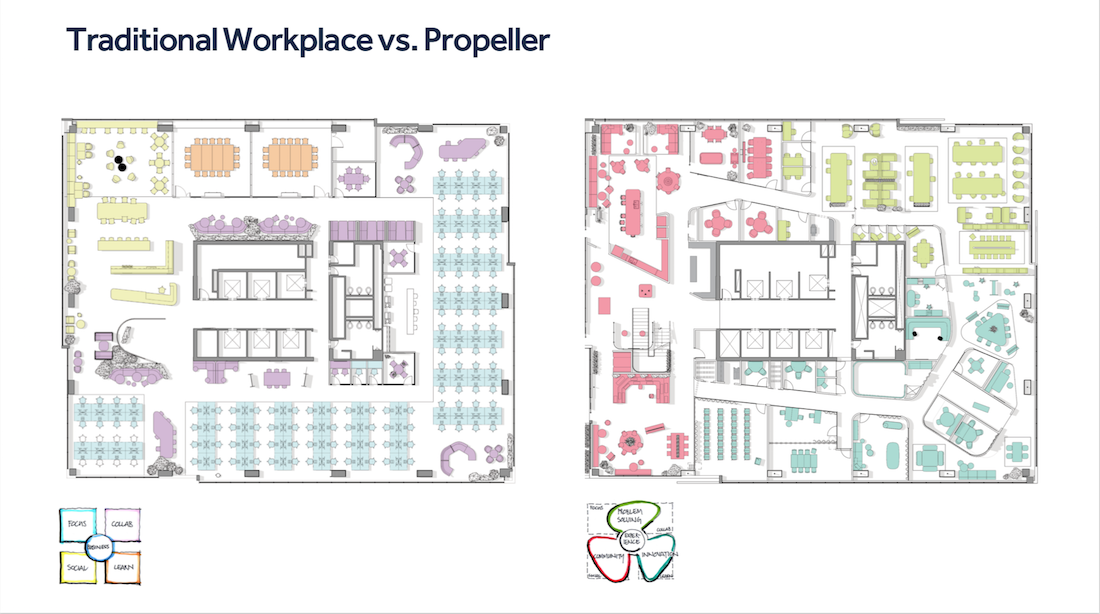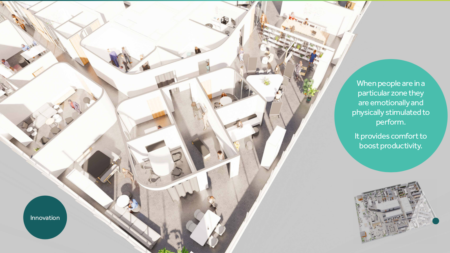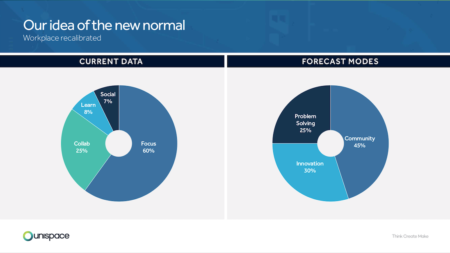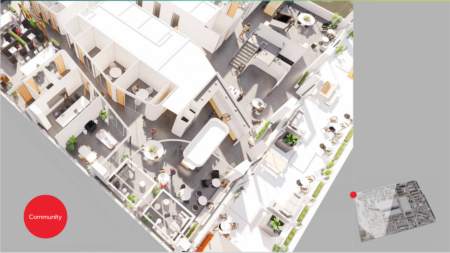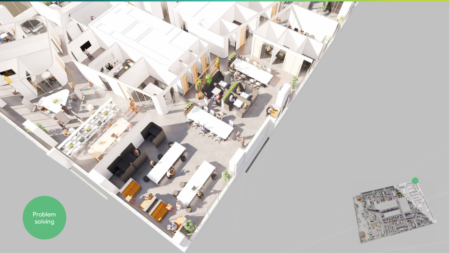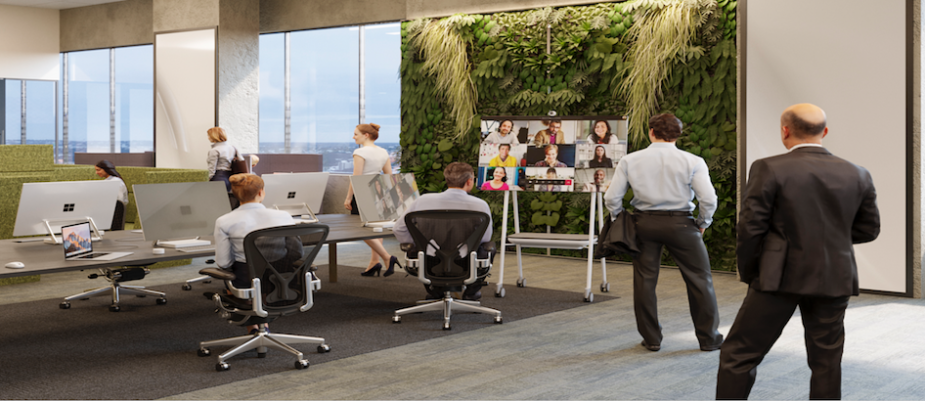
To restart the post-lockdown office, you need a turbine! This is the idea behind the name Propeller Office, the term chosen by Unispace for a new hybrid office model, built on the new home-office balance which has been left by the corona virus experience. The Propeller Office is based on a 20% efficient reduction of the workplace surface, which has to become flexible, technologically manageable, and based on three environments that reflect its three fundamental drivers: innovation, problem solving and community. We talked about it with Elena Caregnato, Unispace Italia design manager.
“Propeller is a concept that gives the idea of movement, of something that looks ahead . We developed it to concretely answer to the questions our customers are asking us: is it essential for my business to return to the office? What is the purpose of having an office today? How will the workplace change in the post-lockdown? Era” With these words Elena Caregnato introduces us to Propeller Office, the new hybrid office model designed for the post-lockdown workplace.

The results of the more than 25,000 interviews conducted by Unispace globally show that one of the major consequences of the corona virus experience was the change of perception about home as a workplace.
Not only 47% of respondents said that they would prefer to work from home for 3 or more days, but it results as well that home is now the work environment where it is possible to obtain the greatest degree of concentration and where collaboration and learning are also possible.
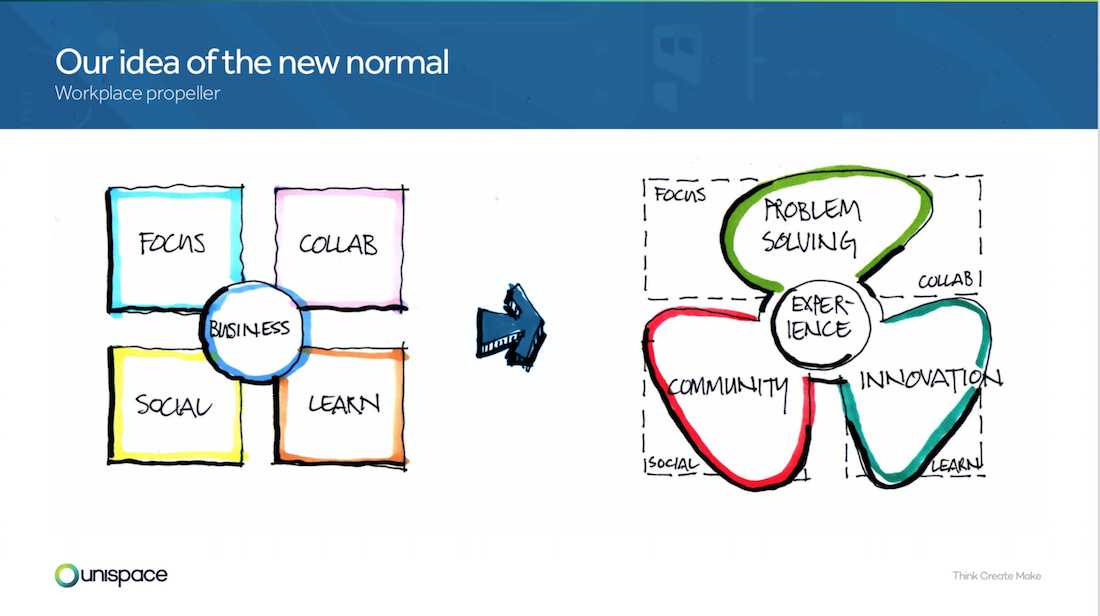
Therefore, the Propeller Office model was studied to offer a “less space, better space” solution, designed to allow not only space savings (and consequently costs savings), but also greater efficiency, through the creation of three key environments: innovation, problem-solving and community.
“Community includes a welcoming environment, with coffee and break areas, where I can meet informally with my colleagues to exchange information and opinions. The entire innovation part includes the pool of reconfigurable meeting rooms for brainstorming and team working.
Finally, we have named problem-solving the more operational part: since the work of concentration can be carried out from home, today I come to the office to discuss with my colleagues about decisions and new plans we have to make. So we have thought about spaces where you can find shared, collaborative benches, where I can carry out also agile one-to-one meetings with my colleague to review presentations or concepts before a meeting”.
However, the concept of experience remains the core of the Propeller Office, and most of all the experience of brand identity: space where both employees and customers can “breathe” the character and identity traits of the company.
Finally, the model is strongly based on the use of technology, not only because it allows the management of the flexible occupation of the workstations, but also because it allows the collection of data and metrics that are the most important, concrete and fundamental elements to guide the decision-making process.
“It is certainly necessary to make a cost-benefit balance of what the company can achieve by reducing the operating space, and it depends mostly on the type of company we are talking about“, concludes Elena Caregnato. “We need to invest in technologies that increase the connection between those who work in the office and those who work from home, reacting to this new normality by designing flexible spaces and solutions and giving the possibility to freely choose from a variety of operational spaces in accordance with the future objectives of the company’s business”.
Text by Gabriele Masi.
